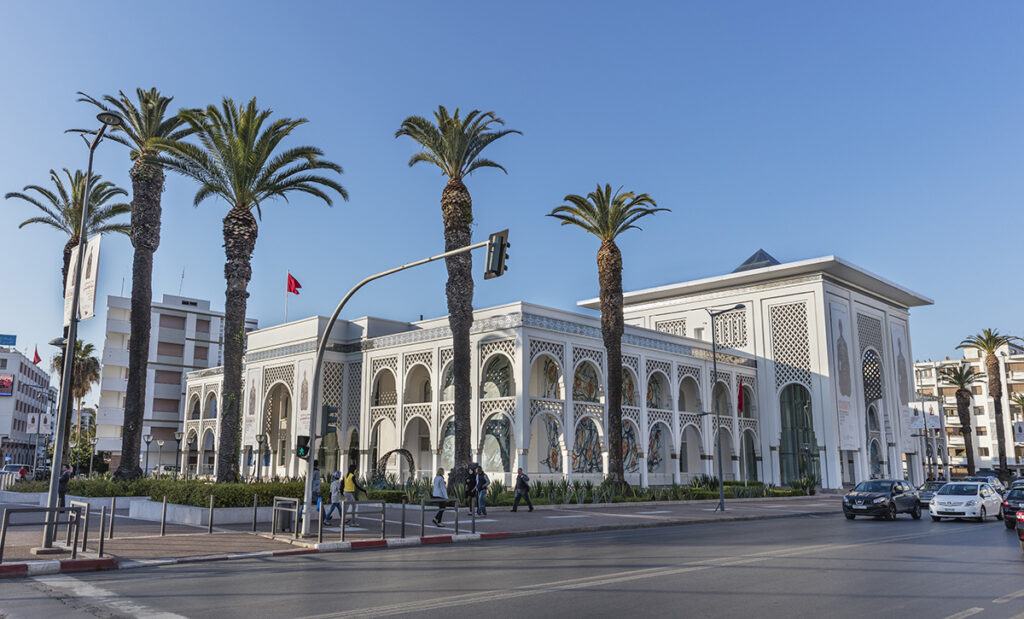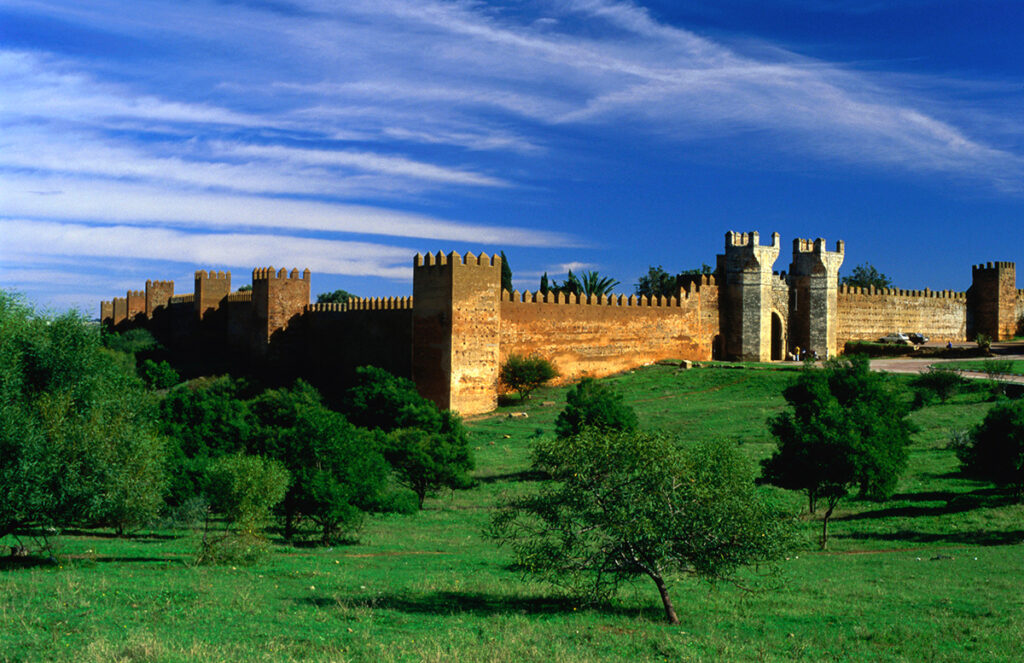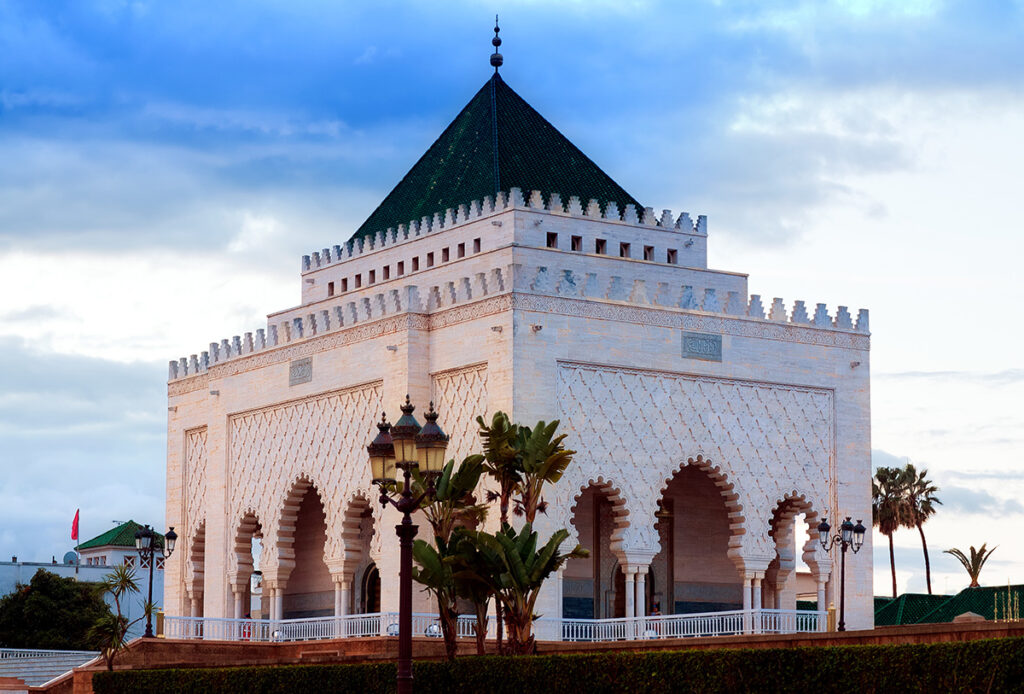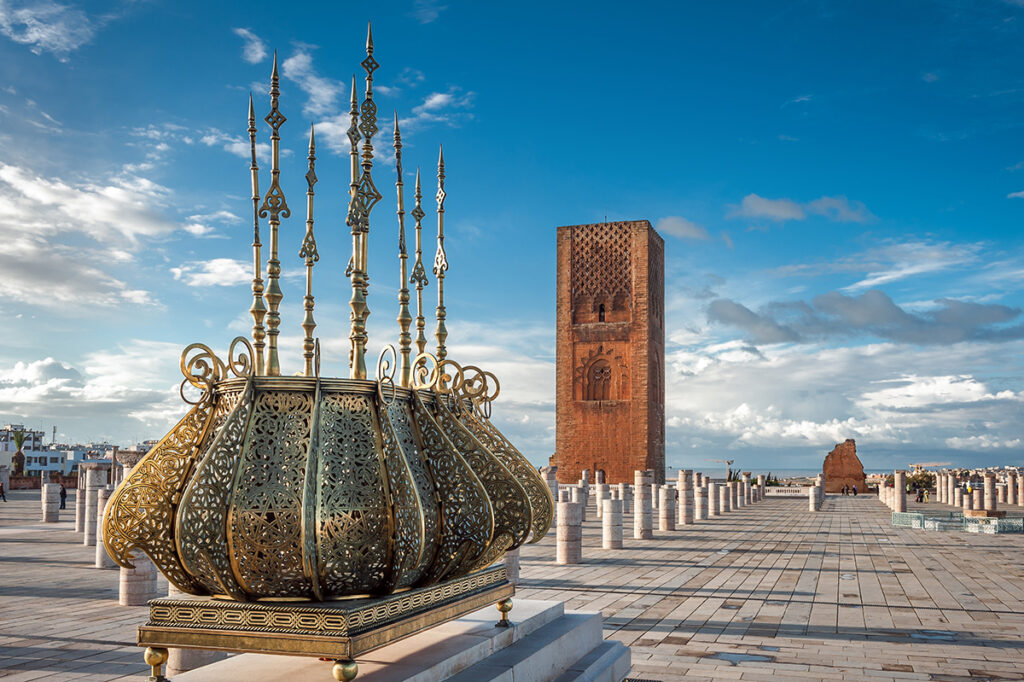Rabat, gentle lifestyle
Rabat, the capital of the Kingdom is home to the Royal Palace, the seat of government and the Parliament. The new city has been undergoing profound modernization shifts over the last ten years yet still remaining faithful to its history. Rabat is boldly reinventing itself and has been on the UNESCO World Heritage List since 2012.
Rabat is the result of two cultures, North-African Arabic on the first hand, European on the other. Architecturally speaking, the city is a juxtaposition of two urbanistic models—a reflection of these two cultures. The medina, the old town, is surrounded by high ocher walls and faces the sea; at the mouth of the Bouregreg river stands the Casbah des Oudayas and its famous Café Maure, a magical place where onlookers come to contemplate the ocean over a cup of tea and traditional Moroccan pastries. Another favorite place for walkers is the Chellah, a necropolis from the Marinid period, located outside the palace ramparts and dominating the Bouregreg Valley. As for the Hassan Tower, an emblematic monument of the city, it bears witness to a past project of Sultan Yacoub El Mansour of the Almohad dynasty who had envisioned to build the largest mosque in the Muslim world, after the one of Samara in Iraq.
The modern side of Rabat, inherited from the urban master plan of the beginning of the century, has been given a new look that is wholeheartedly environmentally sound: many parks adorn the city, where city dwellers can enjoy family walks on the weekends. New futuristic projects, some of which are nearing completion, such as the Mohammed VI Theater, are springing up on the banks of the Bouregreg. Hay Riad, the new business district with its many towers rising, is now home to companies but also to major ministerial departments.
On the cultural scene, the joint cities of Rabat and Salé host the annual Mawazine Festival, which in 2019 brought together more than 2,750,000 festival-goers, who had the opportunity to listen to over 200 artists from all over the world.




